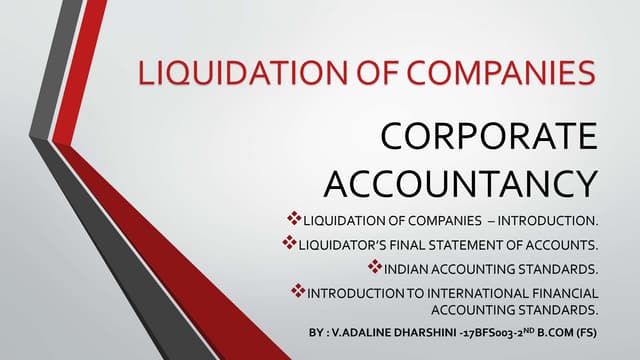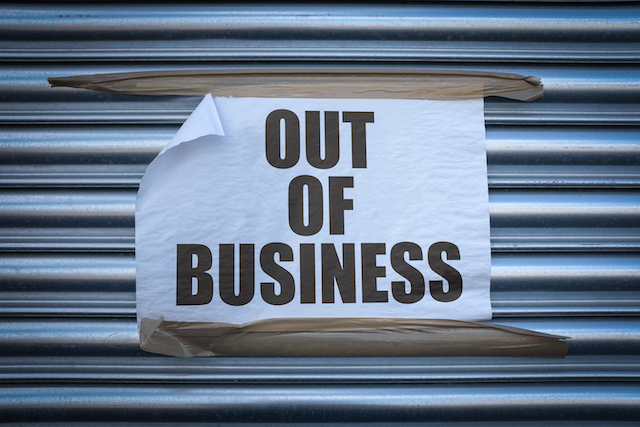The Definitive Guide to Company Liquidation
Everything about Company Liquidation
Table of ContentsAn Unbiased View of Company LiquidationNot known Facts About Company LiquidationSee This Report about Company LiquidationThe 9-Second Trick For Company LiquidationThe smart Trick of Company Liquidation That Nobody is Discussing
A liquidator is specifically designated to supervise the winding up of a business's affairs in order for it to be closed down normally when the firm is declaring bankruptcy. The liquidator is a neutral 3rd event that manages the sale of business possessions in order to pay off any arrearages.Their duty consists of, yet is not limited to: Unbiased Overseer: A liquidator is tasked with acting as an impartial 3rd event to manage the entire company liquidation process. Create Declaration of Affairs: Liquidators have to develop a detailed declaration of affairs record. This paper is distributed to creditors, describing the current financial status of business at the time of its liquidation.
After the liquidation of a firm, its existence is erased from Firms House and it discontinues to be a legal entity. If directors navigated the process uncreative, there would certainly be no penalties or individual obligation for solid financial obligations anticipated. Currently, with a tidy slate, directors can check out new organization chances, though specialist consultation is suggested.
Indicators on Company Liquidation You Should Know
As an example, if greater than 90% of all business investors concur, liquidation can happen on brief notice within 7 days, the minimal statutory notification for creditors. Typically, the larger the liquidation and the even more possessions and resources the organization has, the longer the procedure will certainly take. 'Do I need to pay to liquidate my firm?', the answer will certainly depend on whether your business has any assets leftover when liquidating.

We recognize that no 2 business coincide, which is why we will certainly make the effort to learn more about your organization so we can advise the best training course of activity for you. We just operate in your finest rate of interests, so you can be entirely confident in the solution we give.
The Basic Principles Of Company Liquidation
In the UK, there is a set procedure to closing down or reorganizing a minimal business, whether it is solvent or bankrupt. This procedure is referred to as liquidation and can just be dealt with by a certified bankruptcy professional (IP) based on the Bankruptcy Act 1986. There are four main kinds of company liquidation procedure: Creditors' Volunteer Liquidation (CVL); next Required liquidation; Management; and Participants' Voluntary Liquidation (MVL).

In these circumstances, it is vital that the business ceases trading; if business remains to trade, the supervisors can be held directly liable and it can lead to the bankruptcy professional reporting wrongful trading, referred to as misfeasance, which might lead to lawsuit. The supervisors designate a bankruptcy practitioner and as soon as this has been agreed and validated, there is a conference with the shareholders.
Naturally, if there are no shareholders, this step of the procedure is not essential (Company Liquidation). The IP takes control of the company and starts the business liquidation process. The supervisors are no more entailed in what happens, including the sale of the company's possessions. If the directors want any of the possessions, they can inform the IP.
Company Liquidation for Beginners
The major distinction is that the firm's lenders put on the court for an ending up order which compels the bankrupt business into a liquidation process. Creditors take this activity as a last hotel due to the fact that they have not gotten repayment through various other forms of negotiation. The court assigns an insolvency specialist, likewise called a main receiver, navigate to this website to perform the compulsory business liquidation procedure.
This sort of business liquidation is not voluntary and directors' conduct is reported to the UK's Secretary of State once the liquidation procedure has been finished. Any kind of supervisor that falls short to cooperate with the IP or has actually been involved in supervisor misbehavior, or an illegal act, may result in significant repercussions.
It is made use of as a way to secure the company from any type of lawful action by its lenders. The check my site supervisors of the company consent to make routine payments to resolve their debts over a period of time. The selected manager deals with the voluntary management procedure, and receives the repayments which they after that disperse to financial institutions according to the agreed amounts.
Some Known Questions About Company Liquidation.
This offers the business with time to establish a plan moving forward to rescue the business and avoid liquidation. At this point, directors hand control of the business over to the selected administrator. If a company is solvent yet the supervisors and shareholders intend to shut the organization, a Members Volunteer Liquidation is the right option.
The firm liquidation procedure is managed by a liquidator selected by the supervisors and investors of the business and they have to sign a declaration that there are no creditors continuing to be. The liquidation procedure for an MVL resembles that of a CVL in that assets are understood but the profits are distributed to the directors and the investors of the business after the liquidator's fees have actually been paid.